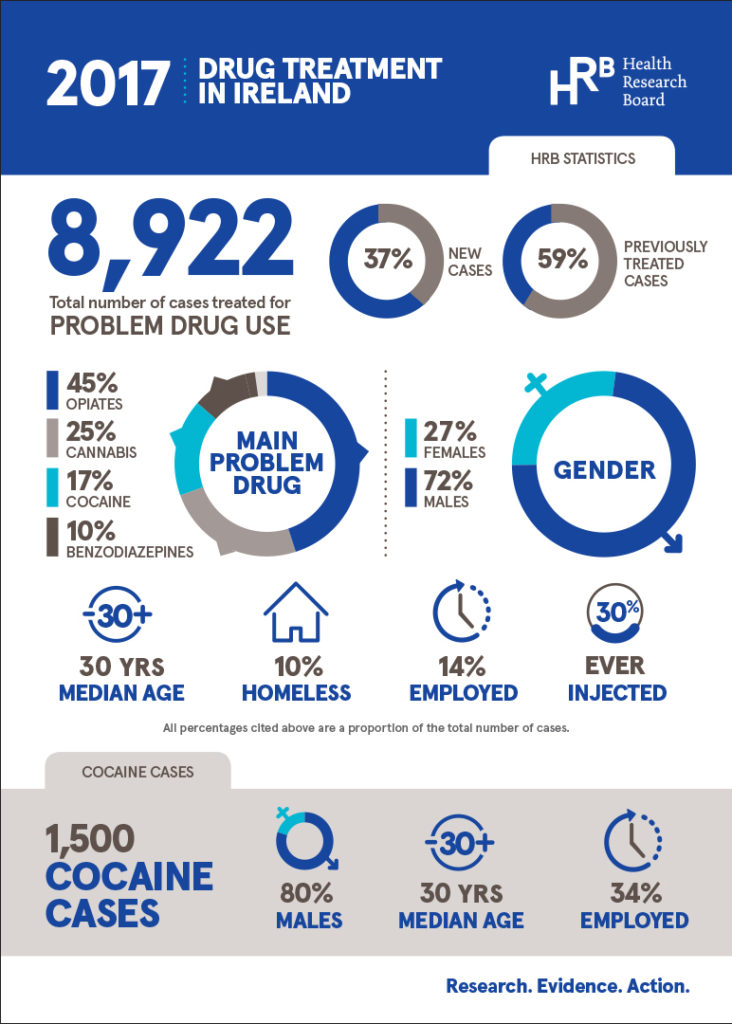There's been a 32% increase in the number of cocaine cases presenting for treatment between 2016 and 2017.
The Health Research Board (HRB) said in total, 63,303 cases presented for treatment for problem drug use between 2011 and 2017.
The number of treated cases increased from 8,361 in 2011 to 9,892 in 2015 - and then fell back to 8,922 in 2017.
In 2017, opiates - mainly heroin - remained the most common drugs reported among cases.
Cannabis, cocaine and benzodiazepines were the second, third and fourth most common drugs reported by cases in treatment.
In 2017, 8,922 cases were treated for problem drug use.
New cases accounted for 37% of all cases treated, as compared to 40% in 2011.
 Source: Health Research Board
Source: Health Research BoardA total of 1,500 cases were treated for cocaine use - almost double the number of cases in 2011.
The number of new cases treated rose from 396 in 2011 to 748 in 2017, and the median age for cases treated has increased from 28 in 2011 to 30 in 2018.
Men accounted for four in every five cases (80%) over the reporting period.
While the proportion of cases in paid employment increased from 20% in 2011 to 34% in 2017.
Darrin Morrissey is chief executive at the HRB: "Problem drug use continues to seriously impact people throughout Irish society.
"This is evident in the drug treatment data presented today, as well as the HRB's recent drug-related deaths and alcohol treatment reports.
"Over the recent period of economic recovery, drug treatment trends are changing and the data we analyse from the HRB information systems helps to inform health services provision and the health policy responses to problem drug use in Ireland".














